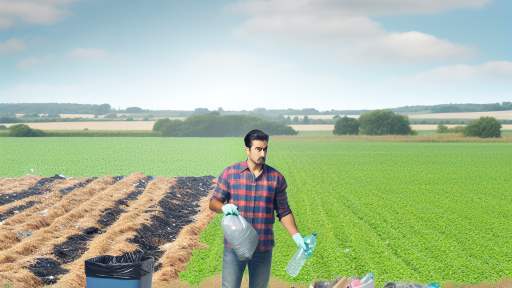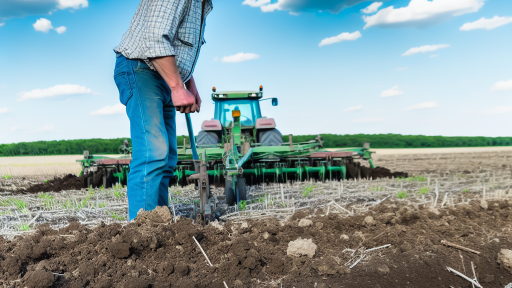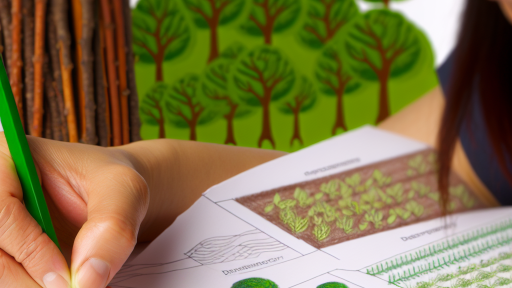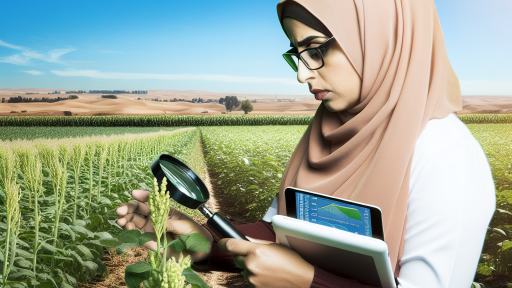Introduction to Sustainable Greenhouse Designs
Sustainable greenhouse designs play a vital role in modern agriculture.
They enable year-round farming while minimizing environmental impact.
With the right designs, farmers can optimize resource use effectively.
Such designs often prioritize energy efficiency and conservation techniques.
Benefits of Sustainable Greenhouses
Sustainable greenhouses enhance crop yield significantly.
They also help reduce water usage through innovative systems.
Additionally, these greenhouses can improve the overall quality of produce.
Using renewable energy sources further lowers operational costs.
Ultimately, they promote sustainable agricultural practices.
Key Elements of Design
Effective sustainable greenhouse designs incorporate several key features.
Natural ventilation systems are crucial for maintaining optimal temperatures.
Energy-efficient lighting systems improve growth without excessive energy consumption.
Rainwater harvesting systems can significantly reduce water usage.
Green insulation materials help maintain stable internal conditions.
Innovative Technologies
Advanced technologies enhance the efficiency of sustainable greenhouses.
Transform Your Agribusiness
Unlock your farm's potential with expert advice tailored to your needs. Get actionable steps that drive real results.
Get StartedAutomated climate control systems optimize conditions for plant growth.
Hydroponic and aquaponic systems enable soil-less farming.
These systems also maximize space and resource utilization effectively.
Moreover, integrating sensors can monitor environmental factors continually.
Design Examples
Several successful sustainable greenhouse models exist worldwide.
The Eden Project in the UK showcases a variety of biomes.
This project utilizes geodesic dome structures for optimal light capture.
The Glasshouse at the New York Botanical Garden emphasizes energy efficiency.
It employs passive solar techniques for temperature regulation.
Key Principles of Sustainable Agriculture
Resource Efficiency
Sustainable agriculture emphasizes efficient use of resources.
This includes water, land, and energy.
Farmers implement practices to reduce waste and conserve resources.
For instance, crop rotation helps maintain soil health.
Soil Health Management
Healthy soil contributes to sustainable agriculture.
Farmers utilize techniques to enhance soil quality.
Cover cropping prevents erosion and improves fertility.
Incorporating compost increases organic matter in the soil.
Biodiversity Promotion
Biodiversity is vital for ecosystem stability.
Sustainable farms include a variety of plants and animals.
This diversity enhances resilience to pests and diseases.
Moreover, it fosters beneficial interactions among species.
Integrated Pest Management
Effective pest control is essential in sustainable farming.
Integrated Pest Management (IPM) combines various strategies.
Farmers monitor pest populations and use biological controls.
Showcase Your Farming Business
Publish your professional farming services profile on our blog for a one-time fee of $200 and reach a dedicated audience of farmers and agribusiness owners.
Publish Your ProfileApplying pesticides only when necessary minimizes environmental impact.
Community Engagement
Sustainable agriculture involves local communities.
Farmers engage with customers and support local markets.
This approach strengthens community ties and promotes awareness.
Furthermore, it encourages collaboration for better practices.
Climate Change Adaptation
Adaptation to climate change is crucial for sustainability.
Farmers adopt methods to withstand changing weather patterns.
These methods include planting drought-resistant crops.
Moreover, sustainable practices reduce greenhouse gas emissions.
Benefits of Year-Round Farming in Greenhouses
Consistent Crop Production
Year-round farming allows for consistent crop production throughout all seasons.
This approach reduces the dependency on seasonal cycles.
Farmers can produce more food, enhancing food security.
Greenhouses provide a controlled environment that optimizes growth conditions.
Optimized Resource Use
Greenhouses maximize resource efficiency, including water and nutrients.
This method reduces waste and supports sustainable practices.
Farmers can recycle water, minimizing environmental impact.
Furthermore, it lowers costs associated with resource procurement.
Improved Pest and Disease Management
Greenhouses offer a protective barrier against pests and diseases.
This control leads to healthier crops and reduces pesticide use.
Farmers can implement integrated pest management strategies effectively.
Consequently, it results in safer produce for consumers.
Economic Advantages
Year-round farming can lead to increased profits for farmers.
With continuous production, farmers can tap into off-season markets.
Additionally, it creates job opportunities throughout the year.
This stability supports local economies and enhances livelihoods.
Environmental Benefits
Sustainable greenhouse practices contribute to lower carbon emissions.
They can significantly reduce land and water usage compared to traditional farming.
Moreover, greenhouses help protect biodiversity by nurturing various plant species.
This approach aligns agricultural practices with environmental conservation.
Delve into the Subject: Enhancing Soil Health Through Sustainable Farm Planning
Materials and Resources for Eco-Friendly Greenhouse Construction
Choosing Sustainable Materials
Start by selecting renewable materials for greenhouse construction.
Bamboo serves as a strong and sustainable option.
Recycled plastic can create durable and lightweight structures.
Consider using reclaimed wood for framing and benches.
Metal components should be made from recycled steel or aluminum.
Investing in Energy-Efficient Technologies
Utilize solar panels to harness renewable energy.
Install energy-efficient LED grow lights for plant health.
Heating systems should rely on geothermal or biomass sources.
Use thermal mass materials to regulate temperature fluctuations.
Water Conservation Strategies
Implement rainwater harvesting systems for irrigation.
Showcase Your Farming Business
Publish your professional farming services profile on our blog for a one-time fee of $200 and reach a dedicated audience of farmers and agribusiness owners.
Publish Your ProfileDrip irrigation reduces water waste effectively.
Consider using greywater systems for non-potable applications.
Integrate mulch and compost to retain soil moisture.
Designing for Maximum Efficiency
Orient greenhouses to capture sunlight throughout the day.
Incorporate natural ventilation systems for air circulation.
Utilize shades or curtains to control light and temperature.
Plan layouts to optimize space and reduce resource use.
Community Resources and Partnerships
Engage with local sustainability groups for knowledge exchange.
Participate in workshops on eco-friendly practices.
Explore grants and funding opportunities for green projects.
Collaborate with universities for research support.
Learn More: Implementing IPM for Healthier Crop Yields
Energy Efficiency Solutions for Sustainable Greenhouses
Maximizing Natural Light
Natural light is essential for plant growth in greenhouses.
Using transparent materials for greenhouse panels can enhance light transmission.
For optimal results, choose polycarbonate sheets or glass.
Additionally, orienting the greenhouse towards the sun can increase light exposure.
Implementing Renewable Energy
Renewable energy sources are vital for sustainable greenhouse operations.
Solar panels can provide clean energy to power greenhouse systems.
Wind turbines are another option for harnessing renewable energy.
These solutions can significantly reduce reliance on fossil fuels.
Utilizing Energy-efficient Systems
Energy-efficient heating and cooling systems are crucial for sustainability.
Consider using geothermal heating for climate control.
This method takes advantage of stable underground temperatures.
Similarly, energy-efficient fans can improve air circulation while conserving energy.
Insulation Techniques for Temperature Control
Proper insulation is key to maintaining temperature in the greenhouse.
Insulating the greenhouse walls and roof minimizes heat loss.
Use high-quality materials like reflective thermal blankets for better insulation.
This approach enhances energy efficiency and reduces heating costs.
Water Conservation Methods
Efficient water use is vital for sustainable greenhouse management.
Implementing rainwater harvesting systems can provide a natural water source.
Furthermore, drip irrigation systems deliver water directly to plant roots.
This method minimizes waste and promotes healthier plant growth.
Smart Technology Integration
Integrating smart technology can optimize greenhouse management.
Automated systems can adjust temperature, humidity, and light levels.
Smart sensors provide real-time data on environmental conditions.
This data allows for informed decision-making and increased efficiency.
Gain More Insights: Transforming Farm Waste into Valuable Resources
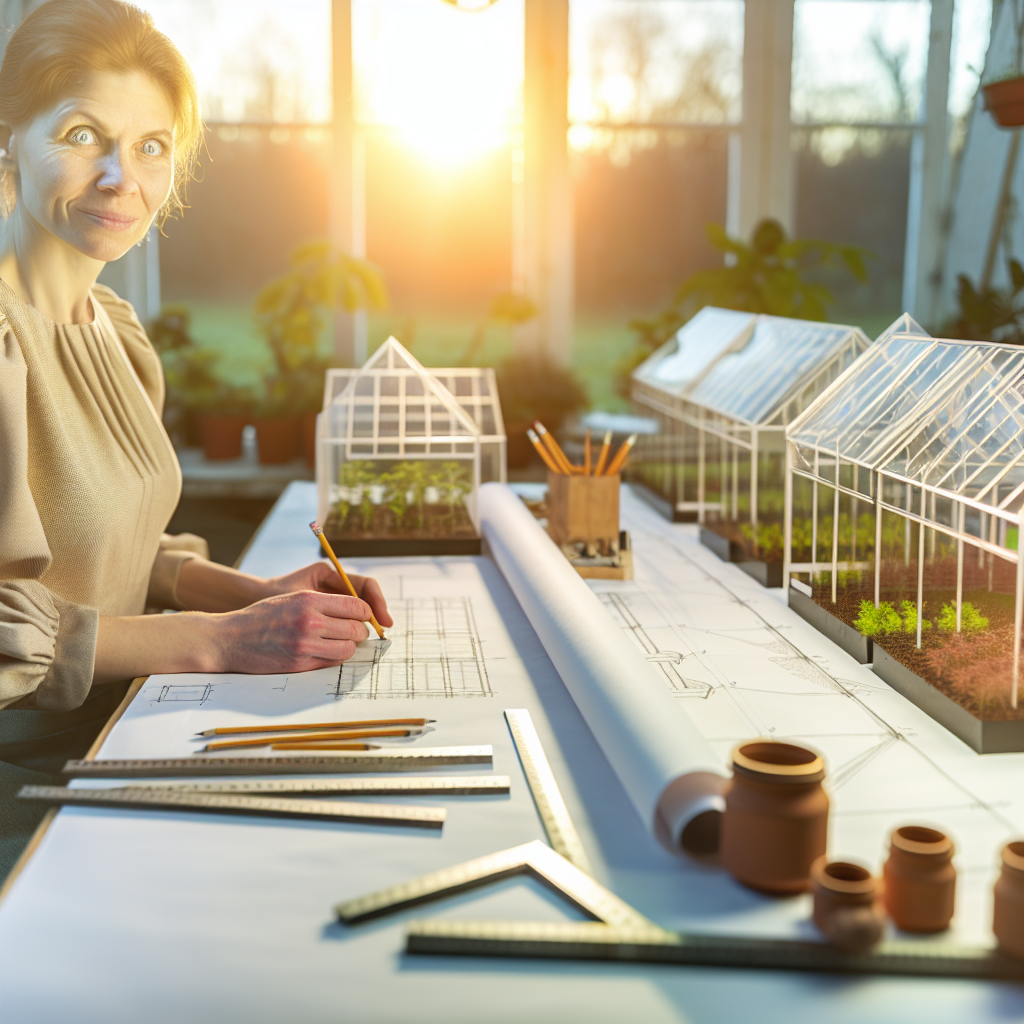
Water Conservation Techniques in Greenhouse Designs
Utilizing Rainwater Harvesting
Rainwater harvesting captures natural precipitation for irrigation.
This technique reduces reliance on municipal water supplies.
Greenhouses can install tanks to store harvested rainwater.
Showcase Your Farming Business
Publish your professional farming services profile on our blog for a one-time fee of $200 and reach a dedicated audience of farmers and agribusiness owners.
Publish Your ProfileSubsequently, the stored water becomes available during dry spells.
Implementing Drip Irrigation Systems
Drip irrigation delivers water directly to plant roots.
This method minimizes evaporation and runoff significantly.
Farmers increase efficiency by applying water at optimal times.
Furthermore, this system reduces weed competition by limiting water to targeted areas.
Incorporating Soil Moisture Sensors
Soil moisture sensors provide real-time data on moisture levels.
These sensors help prevent overwatering by informing irrigation decisions.
They encourage precise water application based on crop needs.
Consequently, farmers optimize water use throughout the growing season.
Employing Shade Structures
Shade structures reduce water loss due to evaporation.
These installations increase humidity levels within the greenhouse.
By maintaining cooler temperatures, plants require less water.
Thus, shade structures contribute to overall water conservation efforts.
Designing for Efficient Water Distribution
Greenhouse layouts can enhance water distribution efficiency.
Strategically placed beds and paths promote effective water flow.
Well-placed contours further guide water to plant roots.
Ultimately, these design choices optimize water usage within the greenhouse.
You Might Also Like: Conservation Tillage Basics For Beginner Farmers
Integrating Renewable Energy Sources in Greenhouse Operations
Understanding Renewable Energy Types
Renewable energy can significantly enhance greenhouse efficiency.
Solar energy captures sunlight to generate electricity or heat.
Wind energy harnesses wind power to produce electricity.
Biomass energy converts organic materials into usable energy.
Geothermal energy uses heat from the Earth’s crust for heating purposes.
Benefits of Using Renewable Energy
Integrating renewable energy reduces operational costs over time.
It decreases reliance on fossil fuels, promoting sustainability.
Furthermore, it lowers greenhouse gas emissions.
This approach can enhance the overall productivity of crops.
Moreover, it leads to energy independence for greenhouse owners.
Implementation Strategies
Start by assessing energy needs before implementation.
Consider installing solar panels on greenhouse rooftops.
Wind turbines can be effective in open areas surrounding the greenhouse.
Utilize geothermal heating systems for efficient temperature control.
Investigate local incentives that support renewable energy adoption.
Case Studies of Successful Integration
Green Fields Farm in Oregon successfully utilizes solar panels.
The farm reduced its energy costs by 40% within a year.
Sunnybrook Greenhouse employs wind turbines for electrical needs.
This approach significantly improved their energy efficiency.
Harvest Moon Greenhouse uses geothermal energy for heating.
As a result, they maintain optimal growth conditions year-round.
Challenges to Overcome
Initial installation costs for renewable energy systems can be high.
Showcase Your Farming Business
Publish your professional farming services profile on our blog for a one-time fee of $200 and reach a dedicated audience of farmers and agribusiness owners.
Publish Your ProfileHowever, financial incentives can help offset these costs.
Additionally, technical expertise is necessary for proper installation.
Climate variability might affect energy production from renewables.
Yet, diversified energy sources can mitigate this risk.
Examples of Successful Sustainable Greenhouse Models
Green House Farm Initiative
Green House Farm Initiative is a pioneering example of sustainable practices.
Located in Oregon, this farm utilizes a passive solar greenhouse design.
This approach maximizes sunlight exposure throughout the year.
Moreover, it incorporates rainwater harvesting systems.
This allows farmers to irrigate plants using minimal external water sources.
The farm also promotes crop diversity to enhance resilience.
As a result, they cultivate vegetables, herbs, and flowers simultaneously.
Ecovita Greenhouse Project
Ecovita is a community-driven project in California.
This project showcases vertical gardening techniques for space efficiency.
It employs a combination of hydroponics and aquaponics systems.
These practices reduce water consumption drastically.
Additionally, the greenhouse operates on renewable energy sources.
Solar panels power the entire facility, decreasing carbon footprints.
Community workshops educate members on sustainable farming practices.
Nature’s Heart Greenhouse
Nature’s Heart is located in the heart of Vermont.
This greenhouse emphasizes organic farming methods.
It utilizes companion planting to naturally deter pests.
This method improves crop health without chemical interventions.
The facility also features a composting system for waste recycling.
Additionally, it showcases an innovative soil health monitoring program.
This program ensures optimal growing conditions are maintained.
Vertical Farms Association
The Vertical Farms Association takes urban farming to new heights.
They deploy high-rise facilities for year-round crop production.
These structures use advanced climate control systems.
LED grow lights optimize photosynthesis for various plants.
This model significantly reduces land use compared to traditional farming.
Moreover, it engages local communities in their food production journey.
As such, they foster a connection between urban residents and agriculture.
Additional Resources
Farming Practices that Support Soil Health – SARE
Biden-Harris Administration Makes Available Historic $3 Billion for …

